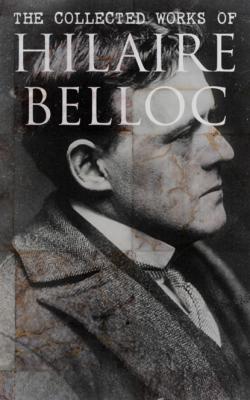The Collected Works of Hilaire Belloc. Hilaire Belloc
Читать онлайн.| Название | The Collected Works of Hilaire Belloc |
|---|---|
| Автор произведения | Hilaire Belloc |
| Жанр | Документальная литература |
| Серия | |
| Издательство | Документальная литература |
| Год выпуска | 0 |
| isbn | 4064066383459 |
35
36
Between this panel and the next are a group of figures representing “the populace,” who do homage to the new king. Then come two panels, separated one from the other and dividing, as it were, the first half of the Epic from the second. These two panels (35 and 36) give the comet, a figure of Harold, and the arrival of an English ship upon Norman land.
It was just after Low Sunday of the year 1066, on the Tuesday, I think, that a great comet was seen in France and England. Modern science has affected to regard it as Halley’s Comet, which it may possibly have been—but modern science should remember that the variation of these bodies, and the confusion of our evidence upon their movements in the remote past, gives no one a right to certitude in such a matter. Nor is it of the least importance. So far as we can fix a date, 25th April 1066 seems to have been the moment when this star was first seen. At any rate, it was an apparition which vastly moved the opinion of Europe at the time.
What the artist meant by the episode with the single word “Harold” does not seem to me doubtful. You have there the conventional marks of the palace, the king in the full garb of his kingship but partially armed; a messenger, and beneath him the hull of ships. He is awaiting the advent of the invaders. He knows that they will come.
The second panel of this group represents the coming of an English ship to Normandy, and beyond that we are told nothing. But we do get some light upon this panel from Wace, who tells us that a ship came from England with a special message to the duke—it must be presumed a private message sent to him at his own orders informing him of the death of Edward and of the usurpation (as William would regard it) of Harold. We have all the conventional symbols of the landing of a ship, but in these it must be specially noticed that few men are represented, and that there are no arms. After this begins the action which completes the whole business: I mean the building and arming of the invading fleet, the landing of the invaders, and the victory that followed.
37
38
39
40
Of this latter part the first three panels (38, 39, 40) are concerned with the building and launching of the ships. In the first William orders the fleet to be built. He is seated upon his throne, and is delivering his commands.
41
42
43
44
45
46
Next you have conventional representations of men cutting down trees, rinding off the bark, and making planks. Then you have the construction of the vessels and the dragging of them to the sea from the slips. It is remarkable how little the artist has attempted to symbolise the implements of this industry; the adze and the axe are all that he gives us. The hammer is not recognisable, nor the nail, nor any other thing in the construction of the boats. Following these three you get the provisioning of the fleet, and in this long panel, or rather two panels undivided (41 and 42) we must closely watch the details, for they are of great historical interest. There you will see the servants bringing on board the swords in their scabbards, the lances tied on to wagons, which also bear barrels of wine; over one man’s shoulder a wine skin, over another’s a small barrel, and, borne upon poles, which bear their weight and stretch them out, the heavy coats of mail for the knights. These panels ended, you have the sailing of the fleet, monotonous and undivided, covering what may be called four panels (43, 44, 45, and 46), though all are continuous. In these the draughtsman has concerned himself to insist upon the number of horses that were carried, and upon little more. But at the end of the inscription you have that piece of historical documentary evidence, “And he came to Pevensey” (it is written just above the last of the four foremost ships proceeding to disembarkation: the ship with the cross upon its mast). The size of the transport, the great number of the ships, has evidently impressed the artist, and he has tried to symbolise it. You get exactly the same thing in Wace: “I have heard it told to my father that there were 700 ships less four.” Then, again, the word Pevensey comes into the Roman de Rou, though spelt “Penevesal” in that document.
47
